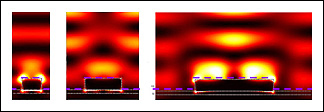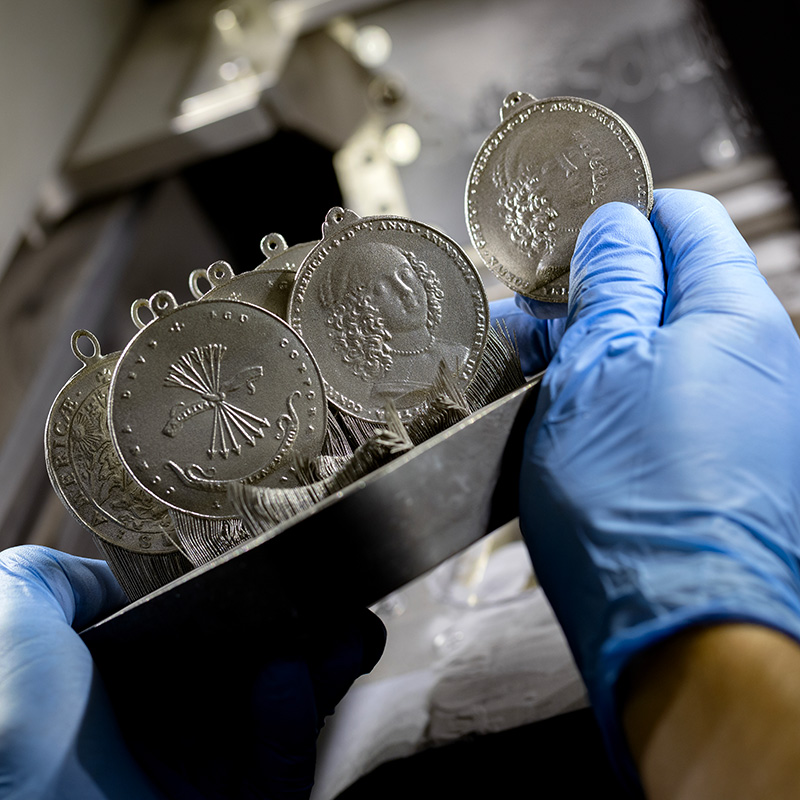News Story
Phaneuf Group Research Selected for VJBO

Calculated electric field intensity for silver nanowire arrays on an oxide covered silicon substrate. The left panel corresponds to a maximum in the fluorescence for Cy3-labled streptavidin molecules, positioned 8 nm above the patterned surface, and also to one surface plasmon wavelength across the width of each nanowire-a condition for a standing wave. The middle panel corresponds to a minimum in the fluorescence, and 1.5 plasmon wavelengths across a wire. The right panel corresponds to a less intense maximum in the fluorescence and three plasmon wavelengths across a wire. Odd number of wavelengths couple strongly to light at normal incidence, while even/half-integral numbers do not. The downward-propagating light is polarized along the left-to-right direction, corresponding to the short axis of the nanowires (the long axis runs normal to the plane of the image.) Nanowire pattern pitches are 316, 512, and 1028 nm, respectively.
The paper, "Enhanced fluorescence and near-field intensity for Ag nanowire/nanocolumn arrays: evidence for the role of surface plasmon standing waves," originally published in Optics Express (Vol. 16, Issue 22, pp.18417-18425 [2008]), presents new insight into the mechanism for nanoparticle enhancement of fluorescence. Phaneuf's group found that for nanowires or columns of the right dimensions it is possible to set up standing waves consisting of counter-propagating surface plasmons. The resulting fields at nearby fluorescent molecules are greatly enhanced over that for the incident light, creating a much larger fluorescent intensity. This knowledge should help in the design of highly efficient biomolecular sensors, with applications in medical screening and anti-bioterrorism technology.
Phaneuf's co-authors are his former advisee, Sherman Guo (Ph.D. '08); postdoctoral research associate Julia J. Heetderks; and former postdoctoral research associate Hung-Chih Kan, who is currently an associate professor at the National Chung Cheng University, Taiwan, and part time visiting faculty in MSE.
For More Information:
Read the original article: "Enhanced fluorescence and near-field intensity for Ag nanowire/nanocolumn arrays: evidence for the role of surface plasmon standing waves" »
Visit the Virtual Journal for Biomedical Optics »
Published December 5, 2008









